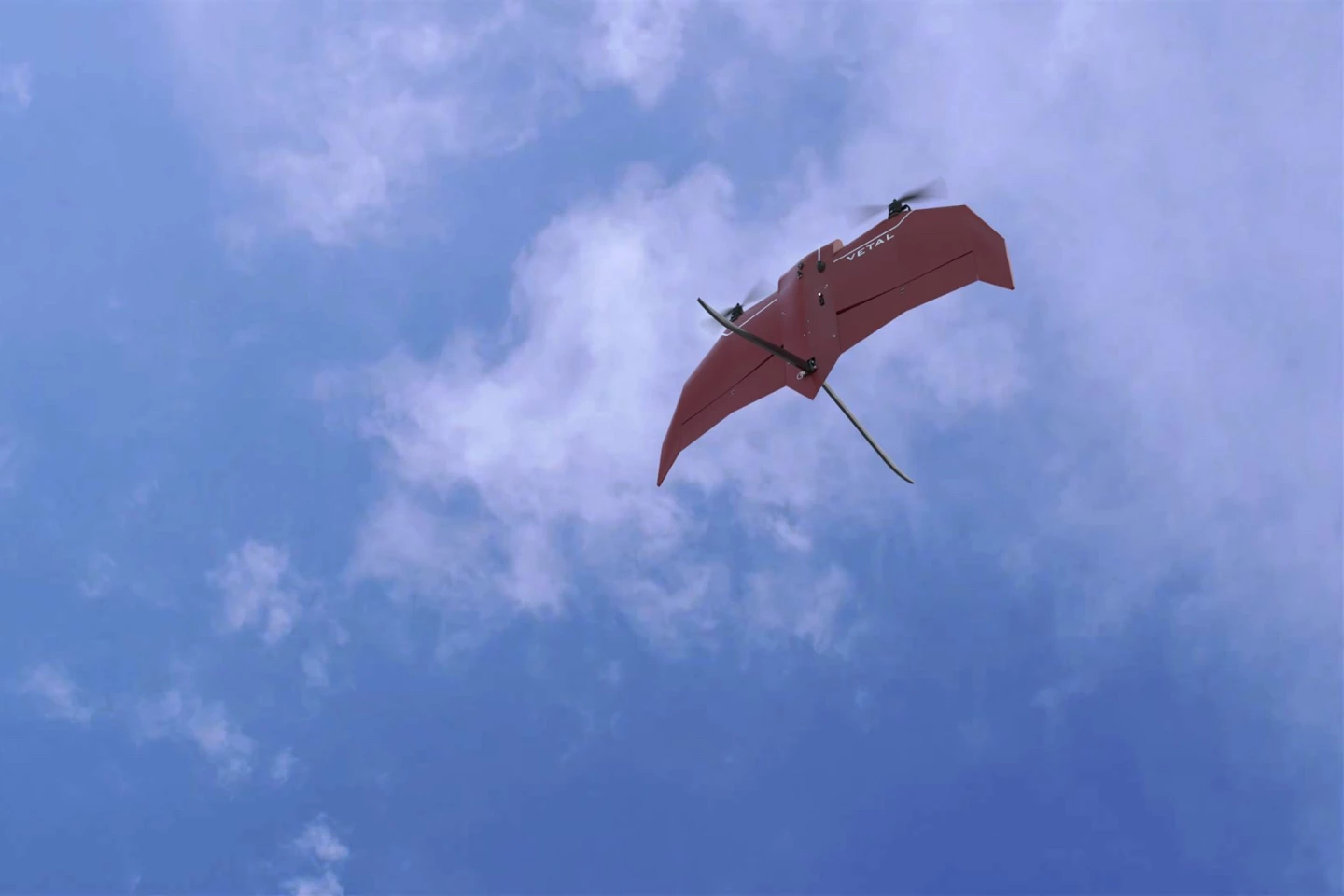Although fixed-wing drones can fly farther and faster than multicopters, they typically require runways to take off and land. The Vetal flying-wing drone addresses that compromise, with a rather striking "tail-sitter" design.
First of all, there are already numerous VTOL (vertical take off and landing) drones which use multiple horizontal propellers to take off like a helicopter, then switch to one or more vertical props and a set of wings for forward flight. While this setup definitely works, it can be mechanically complex, plus the horizontal props just sit around producing drag and adding weight when not in use.
Tail-sitter drones take a different approach. As their name suggests, they stand on their rear end facing nose-up when taking off and landing. To enter forward flight mode, they simply tip forward in mid-air – the same propellers that pulled them up from the ground now proceed to pull them forward.
The twin-prop Vetal, manufactured by Thai firm HG Robotics, is one of the latest such drones to hit the market.

Designed for tasks such as agricultural surveying and general surveillance, it features a 1.3-m (4.3-ft) wingspan and a foam-core/carbon-fiber-shell body, with the whole aircraft reportedly tipping the scales at just 3.8 kg (8.4 lb). Its two motors are powered by a quick-swappable 12-Ah lithium-polymer battery, one charge of which is reportedly good for a flight time of up to 60 minutes.
In forward flight, the drone has a top speed of 90 km/h (56 mph) and a cruising speed of 54 km/h (34 mph). It can carry a payload of up to 800 grams (1.8 lb), which could consist of various types of sensors and/or cameras – these can all be mounted and removed via a quick-release mechanism.

Utilizing a 4G/5G module, the Vetal can remain in contact with its operator up to a distance of 7 km (4 miles). And as is the case with most industrial drones, it can be remotely piloted in real time, or programmed to follow a predetermined flight path. For the latter, it navigates using a combination of GPS and GNSS (Global Navigation Satellite System).
The Vetal drone can be ordered now via the HG Robotics website. We're told that pricing starts at US$23,000.
Source: HG Robotics







